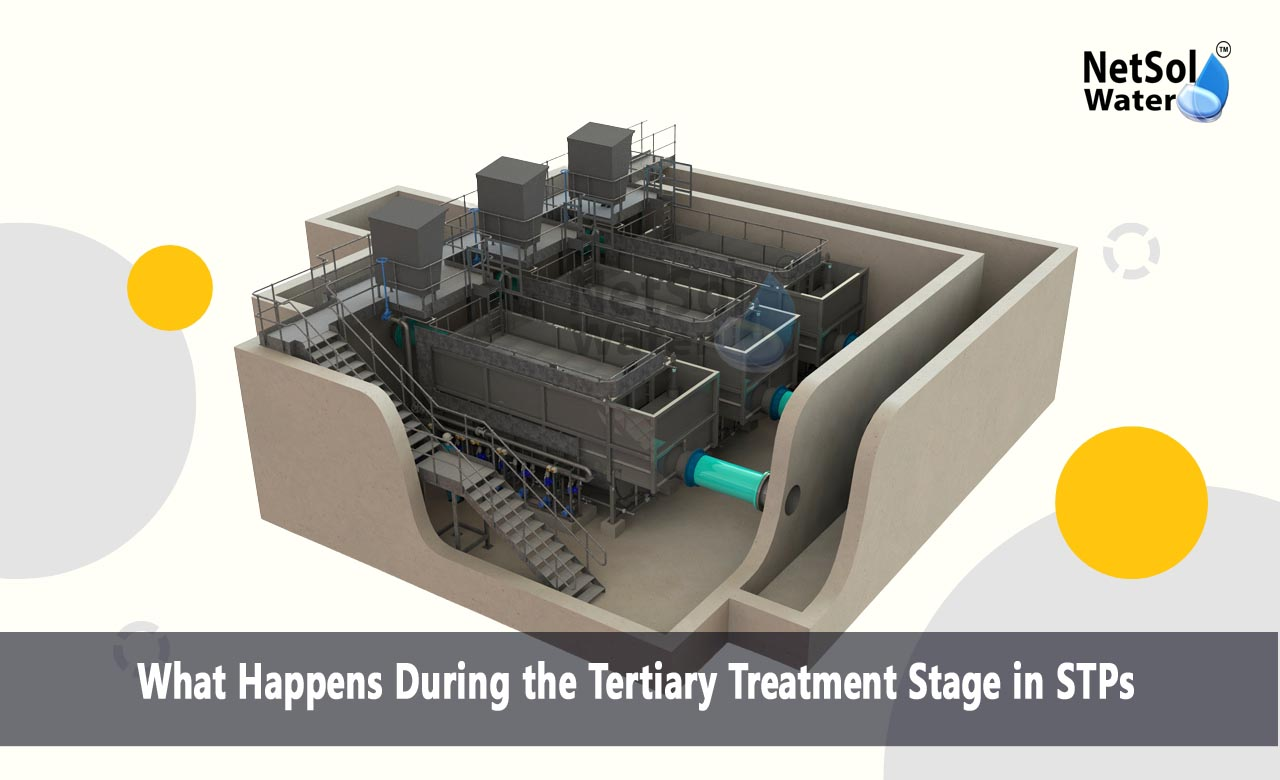What Happens During the Tertiary Treatment Stage in STPs?
Sewage Treatment Plants are essential in treating wastewater and preserving the environment. STPs work by a series of stages in a sequential manner, where every stage increasingly separates impurities from sewage. Although all of us are familiar with the primary and secondary stages, no one is aware of the important role of the tertiary treatment stage of STPs. This final step purifies the water to a level that it is clean and safe enough for discharge in the environment or re-cycling.
We will describe what is done in the tertiary treatment stage in STPs, why we need to do it, and technologies utilized in this process.
The Role of Tertiary Treatment
The tertiary treatment stage in STPs is the final stage of purification after primary (removal of solids) and secondary (biological treatment) stages. Even though the procedures mentioned here eliminates suspended solid and organic materials, they cannot eliminate all contaminants. All such contaminants such as some pathogenic microorganisms, nitrogen and phosphorus such as nutrients, fine particles and chemical pollutants live in treated water.
The purpose of tertiary treatment is to complete the water—removing any remaining impurities so that the water can be released into rivers, lakes, or even for purposes such as flushing or irrigation. It improves the quality of treated wastewater to another level, sometimes for very demanding regulation standards.
What Really Happens During Tertiary Treatment?
In STPs, tertiary treatment consists of advanced methods for treatment of the water that may involve physical process, chemical process, or biological process based on the ultimate use of treated water.
Filtration
Filtration is generally the first tertiary treatment. It removes very fine suspended matter that did not get filtered out earlier. This can be accomplished through sand filters, disc filters, or even membrane filtration. All these machines remove tiny particles that can affect water clarity and quality.
Nutrient Removal
Even after organic water treatment, nutrients such as phosphorus and nitrogen can be left behind. These nutrients, if released without treatment, increase in natural water at the cost of aquatic organisms. Tertiary procedures use systems such as chemical rainfall, ion exchange, or biological nutrient removal to eradicate these components.
Disinfection
Disinfection is one of the most important operation in the tertiary treatment phase of STP. It kills or deactivates disease-causing health-hazardous bacteria, viruses and parasites. Common techniques are chlorination, ultraviolet (UV) light treatment, or ozonation. The treated water is microbiologically protected before disinfection disposal or reuse.
Advanced treatment options
Advanced treatment can also be used in some STPs through active carbon filtration, reverse osmosis, or advanced oxidation procedures (AOPs), where high quality flows are absolutely necessary. These are more expensive, but are very valuable in the elimination of drug residues, heavy metals and complex organic molecules.
Why is tertiary treatment needed?
The tertiary treatment stage in STPs is notan optional add-on step—it is a statutory and environmental necessity. Underserved or untreated effluent can pollute water bodies, injure wildlife, and pose an important public health risk. Tertiary treatment enables compliance requirements of discharge limits as set by pollution control boards and makes wastewater suitable for reuse.
Where fresh water supplies are scarce in urban areas, the tertiary stage is also used in water reuse systems. Tertiary-treated effluent, for instance, is used for toilet flushing or irrigating landscaping in the majority of residential and commercial subdivisions, thereby reducing the use of freshwater.
Long-term Benefits
The existence of a proper tertiary stage in STPs has some long-term benefits:
· Improved quality of water: The final treated water is cleaner, clearer, and cleaner.
· Environmental protection: Protects the lakes and rivers against water pollution.
· Compliance with law: Allows the plants to meet stringent government regulations.
· Enables reuse of water: Treats the water to an appropriate quality for non-potable use.
· Public health safety: Reduces transmission of waterborne illness.
Though the process of tertiary treatment in STPs is very useful, it also has its problems. They include escalated operating cost owing to energy intake, requirement of specialized man-power, intake of energy, and continuous monitoring. But they are economical and efficient in the long run if designed and regularly maintained properly.
Conclusion
The tertiary treatment stage in STPs is greatly important in serving clean, reusable, and eco-friendly water. It completes the earlier stages of treatment by removing the final remnants of contaminants, thus wastewater fully treated and available for discharge or reuse.
If treated water is discharged into a river or for flushing a building, tertiary treatment provides certainty that it will not be harmful to humans and the environment. With drought looming as a threat, STPs possessing robust tertiary treatment systems will be playing an increasingly important role in building a sustainable future.
If creating an STP or wanting to replace your existing system, always incorporate a proper tertiary treatment phase into your solution.
Do you need an advice or assistance on selecting the best water and waste water treatment unit? We have solutions for all your problems!
Let us know your problem, our experts will make sure that it goes away.
For an assistance or related query,
Call on +91-9650608473 Or write us at enquiry@netsolwater.com



